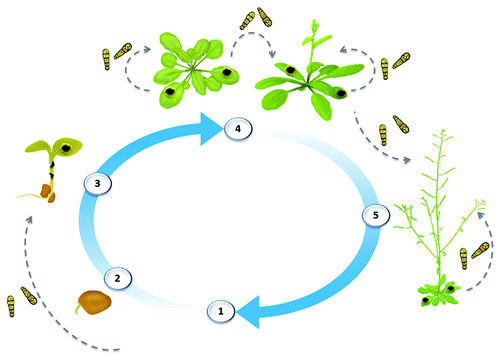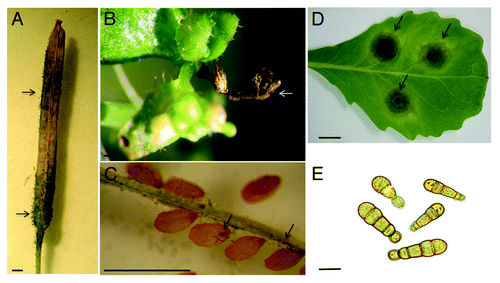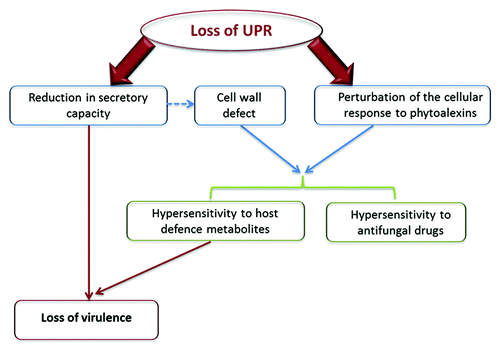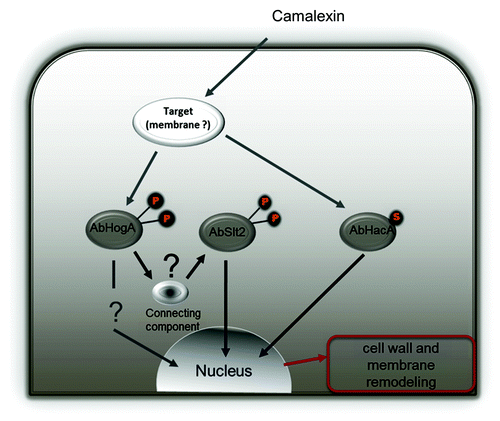Figures & data
Figure 1.A. brassicicola disease cycle. The fungus overwinters on infected crop residues, susceptible weeds, and seed plants (1). It can be seedborne via mycelia within the seed or transitory conidia on the seed surface. Conidia are readily windborne and can be dispersed great distances throughout the growing season (gray arrows represent the aerial spread of conidia). A. brassicicola usually causes damping-off of seedlings (2–3), and dark lesions on aerial parts of adult plants (4). At the plant reproductive stage, seed infection leads to premature pod shatter and shriveled seed (5), causing reduced seed germination and seedling vigor. Black spot disease seriously reduces crop yields, while also reducing the market quality of cauliflower and cabbage heads and oil quality in oilseed species.

Figure 2. Typical symptoms caused by A. brassicicola on an Arabidopsis silique (A), flower (B), seeds (C) (bars = 1 mm), and cabbage leaf (D) (bars = 1 cm). Arrows show necrotic lesions and/or mycelium development and conidia formation. (E) shows typical A. brassicicola conidia produced from necrotic spots (bars = 10 μm).

Figure 3. Different phenotypic characteristics of AbhacA mutants. Loss of virulence may be due to an extreme sensitivity of the UPR-deficient mutant to plant defense metabolites and to a reduced secretory capacity.

Figure 4. Model illustration of fungal signaling pathways regulated by camalexin. Stress responses mediated by UPR and MAPK signaling cascades are coordinated to buffer cells against the toxicity of camalexin. Parallel studies with A. brassicicola knockout mutants showed that camalexin induced AbHog1-dependent phosphorylation of AbSlt2 MAP kinase.Citation43 The UPR signaling pathway is independently activated by production of spliced AbHacA mRNA (AbHacAi).Citation8 This compensatory response may lead to cell wall strengthening and membrane remodeling.

